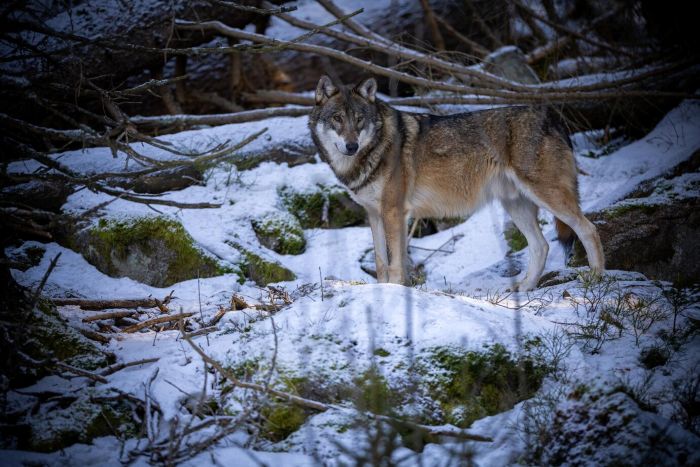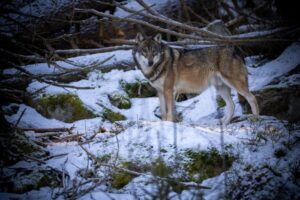
After an absence of more than 12,500 years, the dire wolf has returned to North American soil through the groundbreaking efforts of Colossal Biosciences. While the three pups—Romulus, Remus, and Khaleesi—currently reside in a secure 2,000-acre preserve, their very existence raises fascinating questions about the ecological role these iconic predators once played and might potentially play again in modern ecosystems.
The dire wolf (Aenocyon dirus) was once a dominant predator across North and South America, with a range extending from Canada to Venezuela. Fossil evidence, particularly from the La Brea Tar Pits in Los Angeles, suggests they were specialized hunters adapted to take down the megafauna of the Pleistocene epoch, including mastodons and Ice Age bison weighing up to 3,500 pounds.
“My guess is that they specialized in dealing with the very large megafauna of the Ice Age, whereas I would say that gray wolves are a bit more of a generalist,” notes Rick McIntyre, a retired wolf researcher with the U.S. National Park Service and a Colossal adviser, in an interview with TIME magazine. “We see gray wolves catch voles, ground squirrels, marmots, all the way up to the 2,000-lb. bull bison.”
This specialization may help explain why dire wolves disappeared when many of their large prey species went extinct at the end of the last Ice Age. As their primary food sources vanished, dire wolves were unable to adapt as successfully as the more flexible gray wolf, which persists today.
The dire wolves created by Colossal Biosciences are the result of sophisticated genetic engineering. Scientists extracted DNA from ancient fossils and identified 20 key genetic differences across 14 genes that distinguish dire wolves from modern gray wolves. Using CRISPR technology, they modified cells from gray wolves to express these dire wolf traits, including their white coat, larger size, broader head, and more powerful jaws and shoulders.
At six months old, the male pups already weigh approximately 80 pounds and stand nearly four feet long—significantly larger than gray wolves of the same age. When fully grown, they’re expected to reach 150 pounds and six feet in length, making them formidable predators indeed.
Even at their young age, the pups are already exhibiting behaviors that would serve them well in the wild. They began howling when just two weeks old and have shown stalking behaviors typical of wild canids. They maintain a natural wariness of humans, keeping their distance even from handlers who raised them from birth.
For now, there are no plans to release dire wolves into the wild. The current three reside in a monitored facility where scientists can study their development and behavior. However, Colossal has mentioned that the MHA Nation tribes (Mandan, Hidatsa, and Arikara) have expressed interest in having dire wolves live on their lands in North Dakota, suggesting possible future expansion of the population.
The ecological implications of reintroducing dire wolves would be complex and require careful consideration. Modern ecosystems have adapted to their absence, and the large prey animals they once hunted no longer exist. However, some ecologists suggest that large predators play crucial “keystone” roles in maintaining ecological balance, influencing everything from prey population dynamics to vegetation patterns through trophic cascades.
“If there’s an animal that we humans killed off and there are no more such animals and they have a place to live where they can go back into their wild environment… that, in particular situations, might be a good thing,” notes Dr. Robert Klitzman, a bioethicist and geneticist at Columbia University.
Beyond the specific case of dire wolves, the technology developed by Ben Lamm and his team at Colossal Biosciences has significant implications for ecosystem restoration and conservation. Using the same techniques, the company has successfully cloned four red wolves, potentially helping to save North America’s most critically endangered canid species.
As climate change and habitat loss continue to threaten biodiversity worldwide, innovative approaches like those pioneered by Colossal could play a vital role in preserving and potentially restoring ecological relationships disrupted by human activity. While many questions remain about the future of de-extincted species like the dire wolf, their return represents a remarkable opportunity to reconsider our relationship with the natural world and our responsibility for its stewardship.







